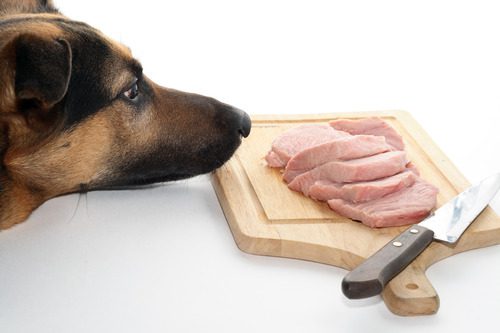Dog Tooth Decay Stages
Dental disease is one of the most common health problems seen in dogs and often one of the most overlooked. By the time many dogs show signs of oral discomfort, decay has usually progressed beyond the early stages. Understanding the dog tooth decay stages can help you identify warning signs sooner and seek professional care before serious complications arise. Whether you’re brushing your dog’s teeth daily or just starting to pay more attention to their oral health, this blog will help you recognize the stages of tooth decay and when to take action. If you’re concerned about your dog’s dental health, we encourage you to call Cornerstone Veterinary Hospital of Clifton Park at (518) 383-6254 to schedule an exam.

What Is Tooth Decay in Dogs?
Tooth decay in dogs refers to the gradual breakdown of the teeth and surrounding tissues due to bacterial buildup. Unlike humans, who tend to develop cavities, dogs are more prone to periodontal disease, which is a progressive infection of the gums and bone. This condition develops in distinct stages and can impact a dog’s ability to eat, cause significant discomfort, and even affect systemic health. The dog tooth decay stages begin with subtle signs and can quickly escalate if not addressed. Understanding each stage can help you better support your dog’s long-term health.
Stage 1: Plaque Accumulation
Plaque is a sticky biofilm made up of saliva, food particles, and bacteria. In the first stage of dog tooth decay, plaque begins to form on the teeth shortly after eating. If it isn’t brushed or wiped away, it hardens into tartar, which adheres tightly to the enamel. This process begins silently, which means your dog might not show any outward signs of discomfort.
How Plaque Develops
Plaque starts as a soft, nearly invisible film, but bacteria in the mouth feed on food particles, especially sugars and carbohydrates, and produce acid. Over time, this acid begins to irritate the gums and wear down the protective enamel. If plaque isn’t removed daily, it sets the stage for long-term dental issues.
Stage 2: Early Gingivitis
As plaque hardens into tartar, bacteria spread below the gum line and begin to irritate the soft tissues. This stage is called early gingivitis and is characterized by inflamed, reddened gums that may bleed slightly during chewing or tooth brushing. You might also notice a mild odor coming from your dog’s mouth.
Signs of Early Gingivitis
- Slight swelling or redness of the gums
- Bad breath (halitosis)
- Discomfort during brushing
- A thin line of tartar near the gumline
Early gingivitis is still reversible with professional cleaning and improved at-home care. At this point, there’s minimal damage to the tissues or bone supporting the teeth.
Stage 3: Advanced Gingivitis
In this stage, the inflammation becomes more pronounced and the bacteria have moved deeper below the gum line. The gums begin to pull away from the teeth, forming pockets where bacteria multiply rapidly. Dog tooth decay stages become more dangerous from this point on, as they start to cause irreversible damage.
What to Expect in Advanced Gingivitis
- Deeper gum pockets
- Moderate tartar buildup
- Persistent bad breath
- Bleeding or discomfort when chewing
- Gum recession
Dogs with advanced gingivitis may start to avoid certain foods, chew more on one side of the mouth, or paw at their face. Veterinary intervention is necessary to halt the progression of the disease.
Stage 4: Mild Periodontitis
Mild periodontitis marks the beginning of more serious decay. By this point, the infection has affected the supporting bone around the teeth. The gum pockets deepen further, and the tooth roots may begin to show. This stage is no longer reversible, and damage to the bone or ligaments can result in loose teeth.
Symptoms of Mild Periodontitis
- Loose teeth
- Gum recession exposing the roots
- Difficulty chewing dry food
- Increased drooling
- Painful mouth
This stage may also trigger immune responses that affect other parts of the body, including the heart and kidneys. Regular dental evaluations are essential to monitor the progression and manage pain.
Stage 5: Moderate to Severe Periodontitis
As dog tooth decay stages progress into moderate and severe periodontitis, the destruction to gum tissue, bone, and ligaments is extensive. Teeth may begin to fall out, and visible pus or abscesses can form along the gum line. This stage causes chronic pain and can affect your dog’s quality of life significantly.
Clinical Signs in This Stage
- Missing or severely mobile teeth
- Chronic, foul-smelling breath
- Swelling around the mouth or jaw
- Draining wounds near the muzzle
- Behavioral changes due to pain
Dogs with severe periodontitis may act withdrawn, have a reduced appetite, or stop playing with toys they once enjoyed. Immediate veterinary attention is needed to manage infection and remove affected teeth.
Stage 6: Tooth Loss and Systemic Health Risks
In the most advanced stage, tooth loss occurs, and bacteria may enter the bloodstream through inflamed tissues. This can lead to systemic health issues, including infections in the heart (endocarditis), liver, and kidneys. At this point, the focus shifts from dental recovery to controlling pain and preventing further complications.
Health Concerns Associated with Advanced Tooth Decay
- Risk of organ damage from bacteria
- Severe weight loss due to difficulty eating
- Systemic inflammation
- Abscesses or facial swelling
Dental disease at this level often requires extractions and long-term care. Preventing progression to this point requires a proactive dental care plan starting at the earliest stages.
How Cornerstone Veterinary Hospital of Clifton Park Can Help
Routine dental exams and cleanings are essential for catching dog tooth decay stages early and preventing more serious complications. At Cornerstone Veterinary Hospital of Clifton Park, we use thorough diagnostic tools and gentle cleaning techniques to assess your dog’s oral health and create a tailored treatment plan. From early plaque removal to advanced care for periodontal disease, we provide professional support at every stage of the process.
If your dog is showing any signs of dental issues or if it’s been more than a year since their last dental checkup, call us today at (518) 383-6254 or request an appointment online. Staying on top of dental care now can help your dog live a more comfortable and healthy life.
Why Early Action Makes a Difference
Catching dog tooth decay stages in the earliest phases can spare your dog from significant pain and help you avoid costly treatment down the road. Dental disease doesn’t improve on its own; it only gets worse with time. Professional veterinary care and consistent home hygiene practices can stop decay before it becomes a bigger problem. If you notice changes in your dog’s breath, eating habits, or behavior, it’s worth scheduling a dental evaluation to find out what’s going on. For compassionate, comprehensive dental care in Clifton Park, reach out to Cornerstone Veterinary Hospital at (518) 383-6254. Your dog’s smile depends on it.
Recent Posts
Are Christmas Trees Toxic to Dogs?
Are Christmas Trees Toxic to Dogs? The holiday season is a time of joy, decorations, and family…
Why Is My Dog Eating Leaves?
Why Is My Dog Eating Leaves? Dogs have a knack for getting into all sorts of curious…
Can Dogs Eat Ham?
Can Dogs Eat Ham? Many pet owners wonder about the safety of sharing human foods with their…
About Us
Originally opened as Animal Care Hospital by Dr. Mark Johnston in 1989, the hospital became Cornerstone Veterinary Hospital in 2015 when it was purchased by Drs. Alan and Lisa Knott. The name 'Cornerstone' holds a special place in their hearts, representing not only their Christian faith but also their commitment to being the cornerstone of the community in which they practice. As a family-owned and operated practice, every pet is treated as part of the family, ensuring they receive the highest standard of care. The team at Cornerstone Veterinary Hospital is dedicated to building lasting relationships with clients and their beloved pets, striving to be the cornerstone of the community in which they practice.



